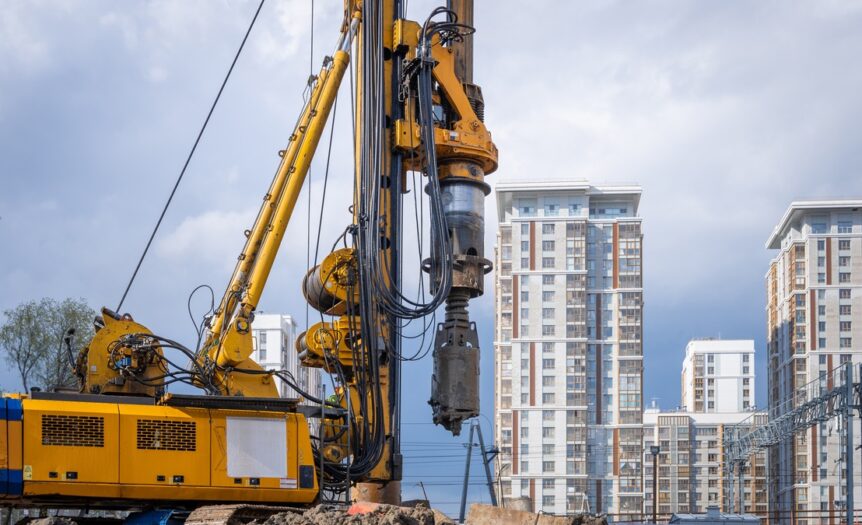Sustainability is no longer just a trend; it is a necessity across all industries, and foundation engineering is no exception. Sustainable practices in foundation engineering focus on minimizing environmental impact, conserving resources, and ensuring structures are reliable for generations to come. But what does this involve, and how can the construction industry integrate effective solutions to align with these goals?
Understanding Sustainable Foundation Engineering
Sustainable foundation engineering involves designing and constructing foundation systems in an environmentally responsible manner. It aims to reduce carbon footprints, limit resource depletion, and achieve long-lasting structural performance. Key principles include using locally sourced materials, optimizing designs for minimal waste, and prioritizing effective soil remediation strategies. By strategically incorporating these elements, foundation engineering supports not only the built environment but also the natural ecosystems it intersects with.
Materials and Methods
A crucial component of sustainability in foundation engineering lies in the careful selection of materials. Recycled steel and geopolymer concrete stand out as effective materials that reduce the demand for natural resources while maintaining or even improving structural integrity. In addition to materials, methodologies also play a pivotal role. Continuous flight auger (CFA) piling, for instance, offers advantages in reducing noise and vibrations during construction, making it more environmentally friendly in urban areas.
However, alternatives like full displacement piling (FDP) further minimize waste by displacing soil rather than extracting it. Understanding the differences between CFA piling and FDP systemscan help you choose a method that strikes a balance between innovation and environmental responsibility.
Challenges and Solutions
Adopting sustainable foundation practices comes with its challenges. Cost is often cited as a barrier, as eco-friendly materials and methods might appear more expensive upfront. There’s also the technical hurdle of adapting new approaches to complex site conditions, including varied soil types and extreme weather conditions.
Solutions to these challenges are both educational and technological in nature. Promoting collaboration among stakeholders in the construction industry can spread awareness of the economic and environmental benefits that sustainable methods provide. Engineers can leverage advanced modeling tools, such as building information modeling (BIM), to devise solutions tailored to the unique conditions of each site.
Encouraging the Shift Toward a Sustainable Industry
The adoption of sustainable practices in foundation engineering is not simply an ethical imperative; it is a strategic necessity. By focusing on environmentally responsible solutions, the industry can mitigate its impact on the planet while creating high-performing and cost-effective structures. Collaboration, innovation, and advocacy are key to driving this change. The first step? Start making intentional choices today that prioritize the planet alongside structural performance.










 Deering Estate
Deering Estate
 Massage Envy South Miami
Massage Envy South Miami
 Calla Blow Dry
Calla Blow Dry
 My Derma Clinic
My Derma Clinic
 Sushi Maki
Sushi Maki
 Sports Grill
Sports Grill
 The Healthy Kitchen
The Healthy Kitchen
 Golden Rule Seafood
Golden Rule Seafood
 Malanga Cuban Café
Malanga Cuban Café

 Kathleen Ballard
Kathleen Ballard
 Panter, Panter & Sampedro
Panter, Panter & Sampedro
 Vintage Liquors
Vintage Liquors
 The Dog from Ipanema
The Dog from Ipanema
 Rubinstein Family Chiropractic
Rubinstein Family Chiropractic
 Your Pet’s Best
Your Pet’s Best
 Indigo Republic
Indigo Republic




 ATR Luxury Homes
ATR Luxury Homes


 2112 Design Studio
2112 Design Studio
 Hamilton Fox & Company
Hamilton Fox & Company
 Creative Design Services
Creative Design Services
 Best Pest Professionals
Best Pest Professionals
 HD Tree Services
HD Tree Services
 Trinity Air Conditioning Company
Trinity Air Conditioning Company
 Cisca Construction & Development
Cisca Construction & Development
 Mosquito Joe
Mosquito Joe
 Cutler Bay Solar Solutions
Cutler Bay Solar Solutions


 Miami Royal Ballet & Dance
Miami Royal Ballet & Dance
 Christopher Columbus
Christopher Columbus
 Pineview Preschools
Pineview Preschools
 Westminster
Westminster
 Carrollton
Carrollton
 Lil’ Jungle
Lil’ Jungle
 Frost Science Museum
Frost Science Museum
 Palmer Trinity School
Palmer Trinity School
 South Florida Music
South Florida Music
 Pinecrest Orthodontics
Pinecrest Orthodontics
 Dr. Bob Pediatric Dentist
Dr. Bob Pediatric Dentist
 d.pediatrics
d.pediatrics
 South Miami Women’s Health
South Miami Women’s Health

 The Spot Barbershop
The Spot Barbershop
 My Derma Clinic
My Derma Clinic




 Miami Dance Project
Miami Dance Project

 Rubinstein Family Chiropractic
Rubinstein Family Chiropractic
 Indigo Republic
Indigo Republic

 Safes Universe
Safes Universe
 Vintage Liquors
Vintage Liquors
 Evenings Delight
Evenings Delight





 Atchana’s Homegrown Thai
Atchana’s Homegrown Thai
 Baptist Health South Florida
Baptist Health South Florida

 Laser Eye Center of Miami
Laser Eye Center of Miami
 Visiting Angels
Visiting Angels
 OpusCare of South Florida
OpusCare of South Florida

 Your Pet’s Best
Your Pet’s Best





 HD Tree Services
HD Tree Services
 Hamilton Fox & Company
Hamilton Fox & Company


 Creative Design Services
Creative Design Services